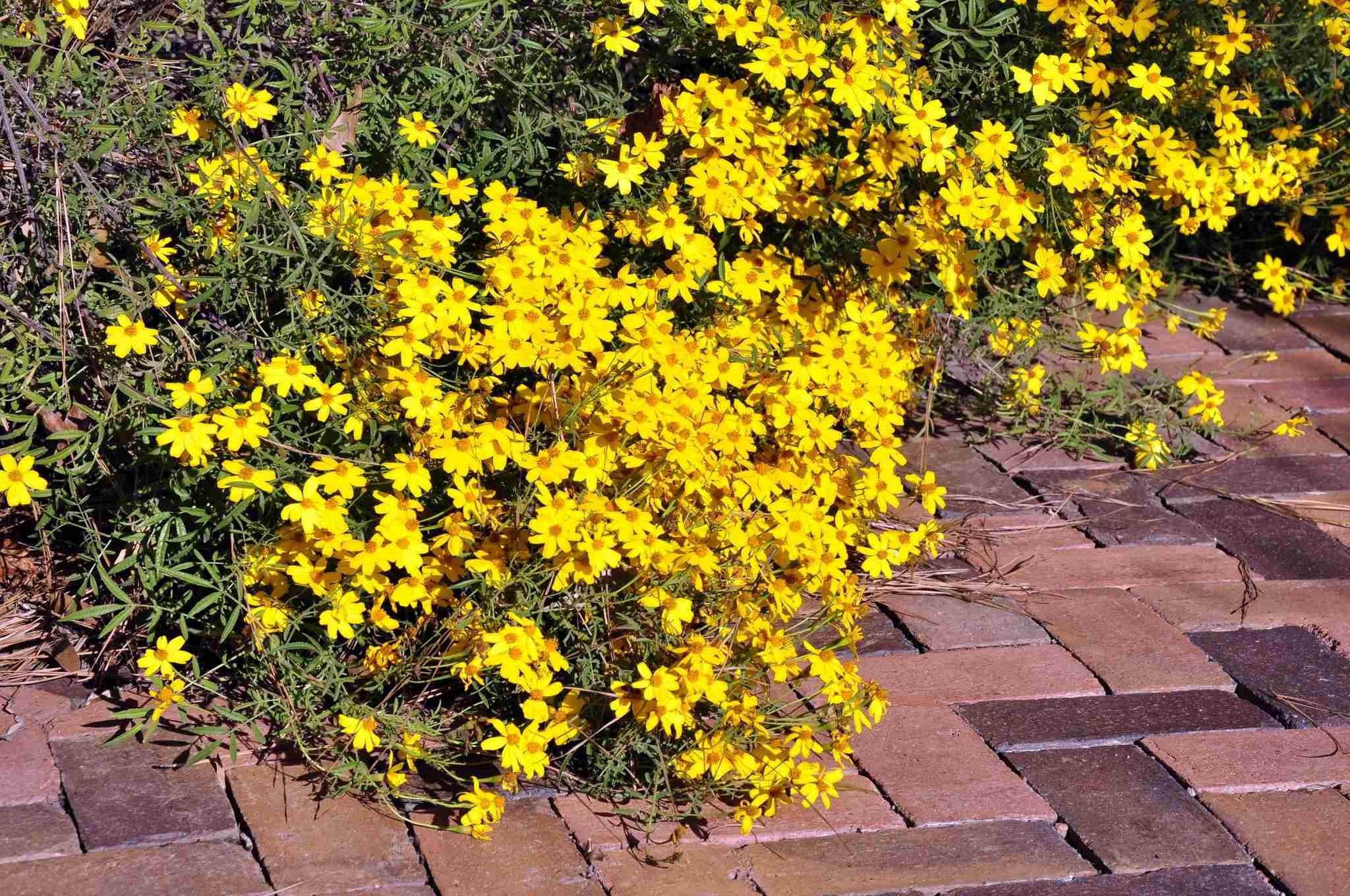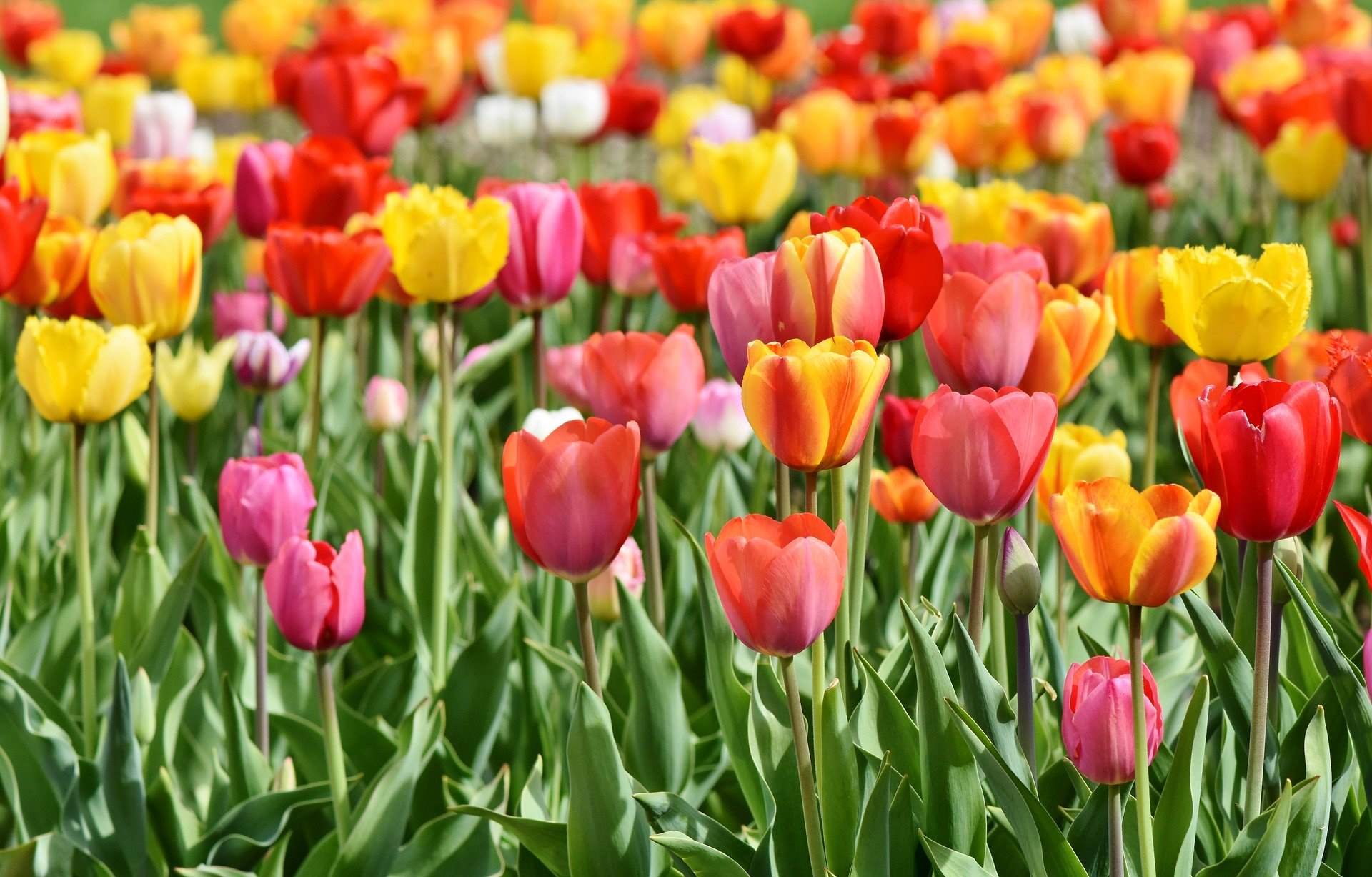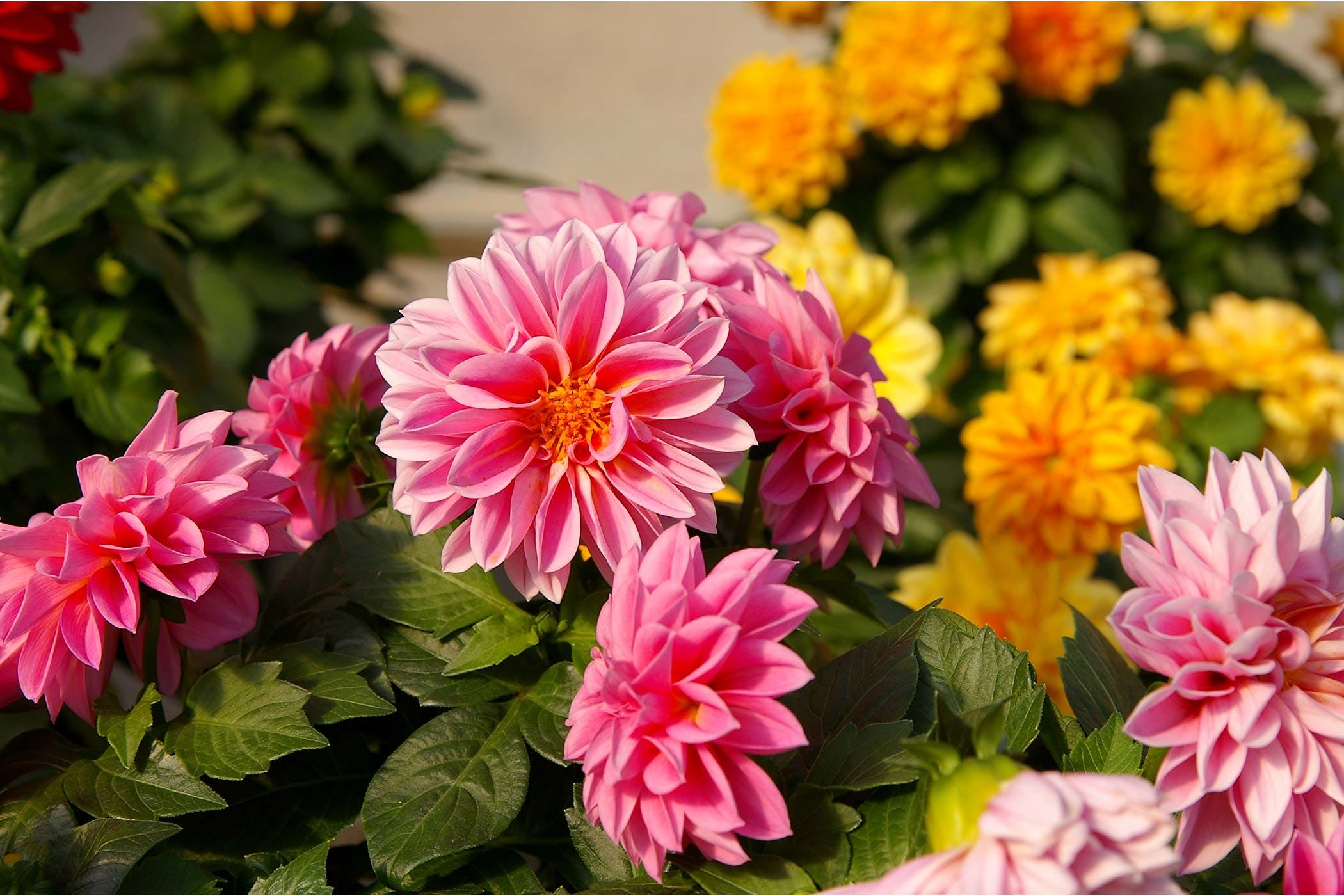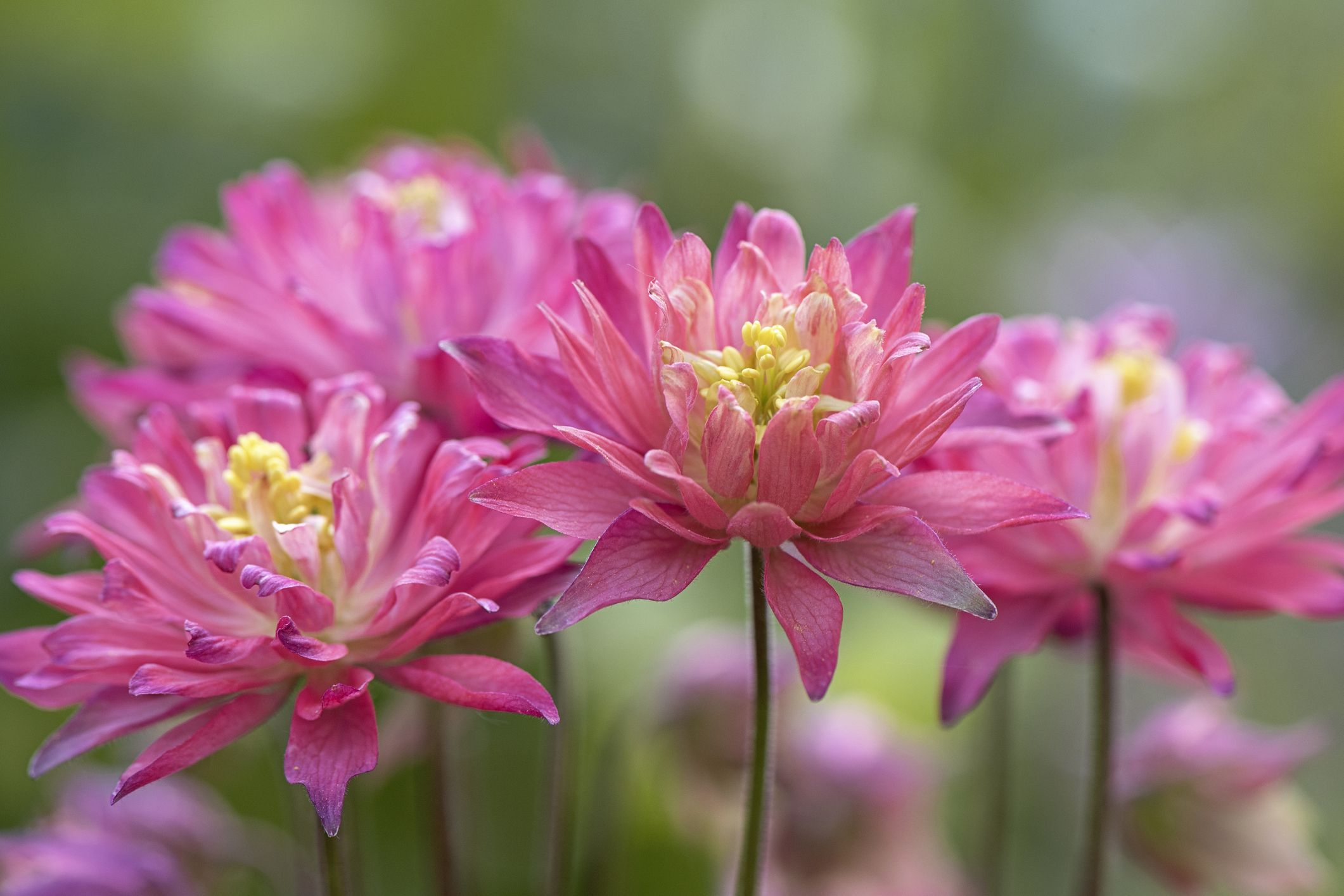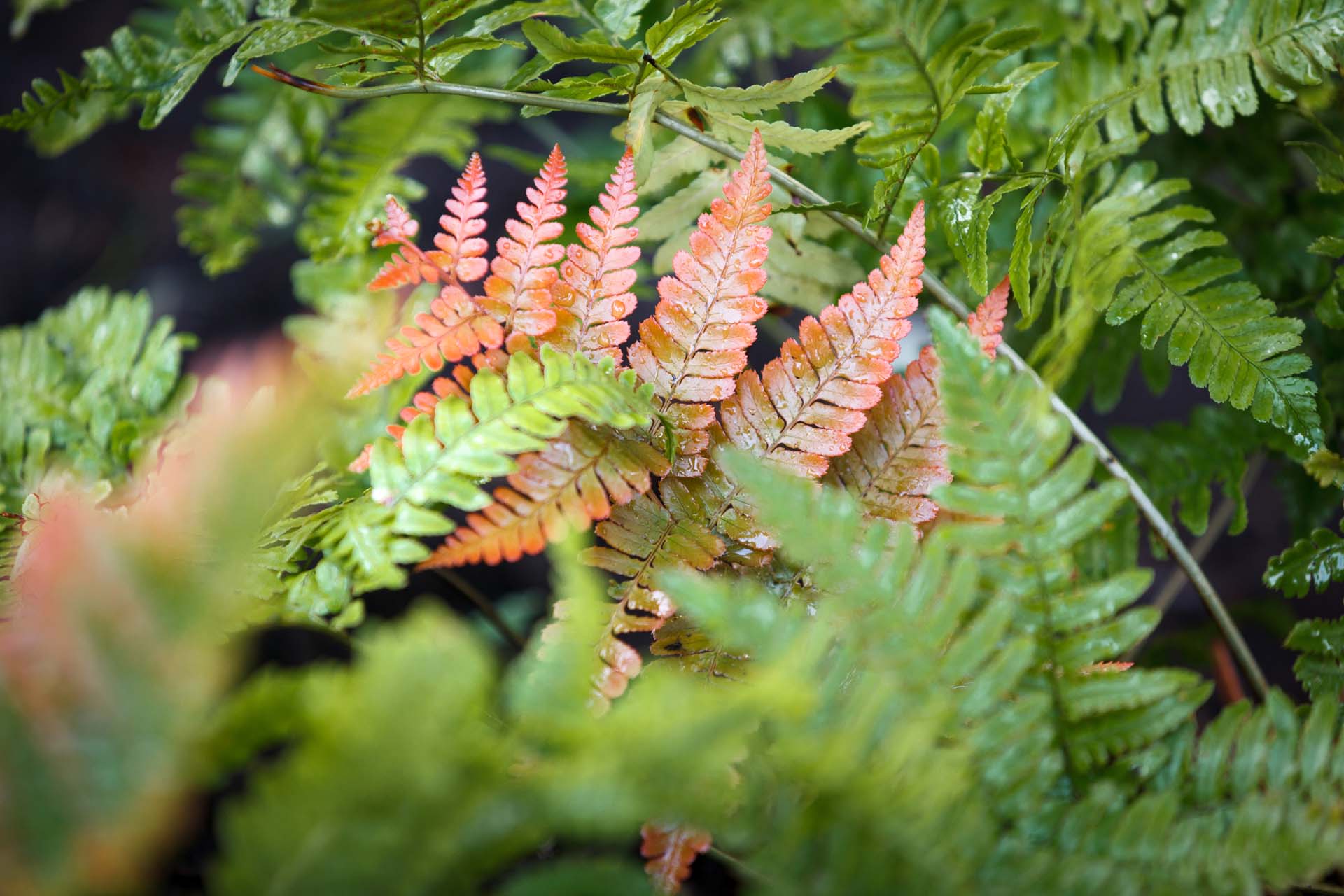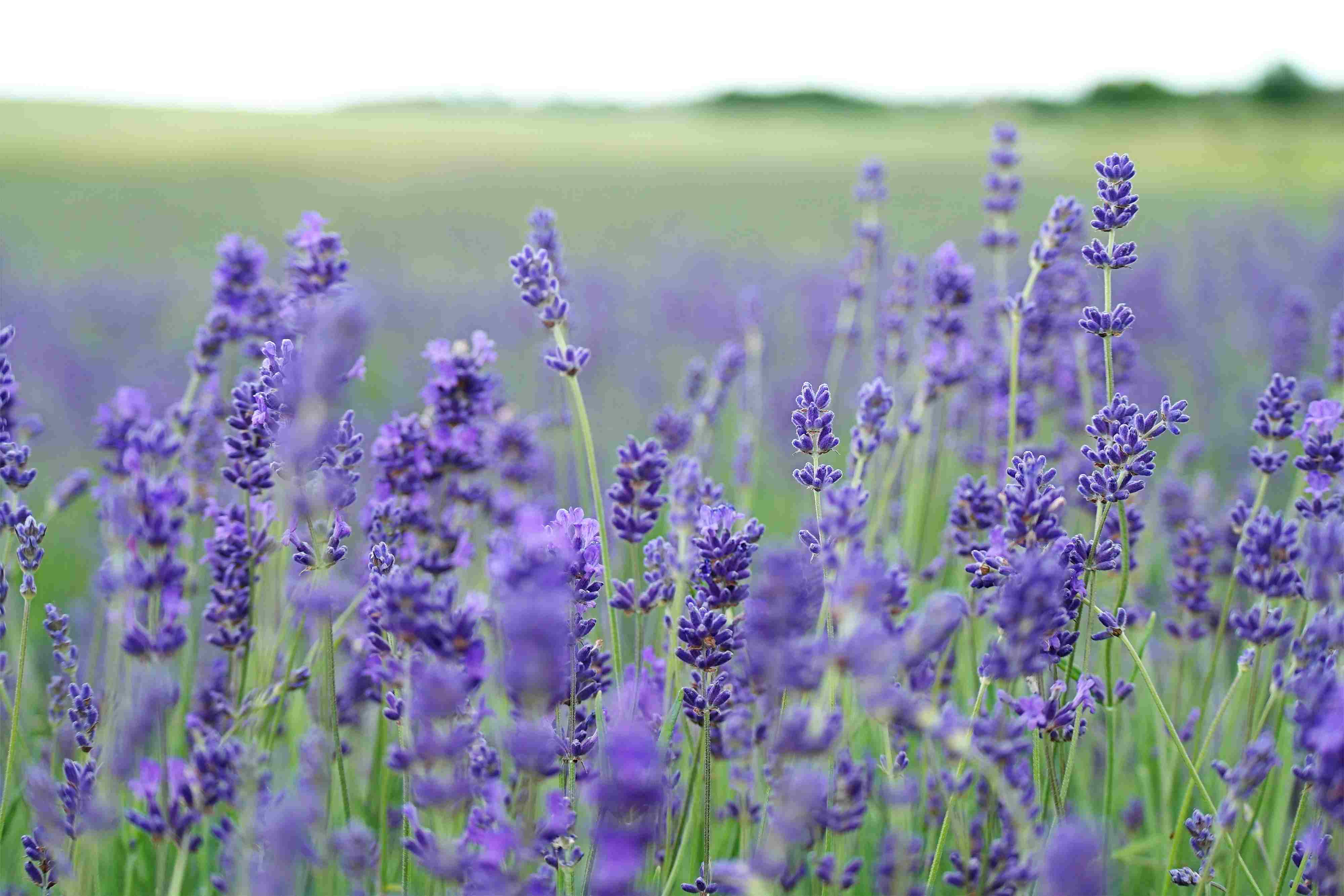Home>Gardening Techniques>Seasonal Gardening>What Comes Back Every Year Perennials Or Annuals


Seasonal Gardening
What Comes Back Every Year Perennials Or Annuals
Modified: January 22, 2024
Discover the answer to the age-old gardening question: what comes back every year, perennials or annuals? Enhance your seasonal gardening knowledge with this informative guide.
(Many of the links in this article redirect to a specific reviewed product. Your purchase of these products through affiliate links helps to generate commission for Chicagolandgardening.com, at no extra cost. Learn more)
Table of Contents
- Introduction
- Definition of Perennials
- Definition of Annuals
- Key Differences Between Perennials and Annuals
- Benefits of Perennials
- Benefits of Annuals
- Factors to Consider When Choosing Between Perennials and Annuals
- Popular Perennial Plants
- Popular Annual Plants
- Tips for Caring for Perennials
- Tips for Caring for Annuals
- Conclusion
Introduction
Gardening is a beloved hobby for many people, allowing them to immerse themselves in nature and create beautiful green spaces. Whether you have a sprawling backyard or a small balcony, adding plants to your living space can bring a sense of joy and tranquility. When it comes to choosing plants for your garden, understanding the difference between perennials and annuals is crucial.
Perennials and annuals are two types of plants that gardeners commonly encounter. One of the main distinctions between these two categories is their life cycle. Perennials are plants that live for multiple years, returning year after year, while annuals complete their life cycle within a single year. Understanding the characteristics and benefits of each type can help you make informed decisions when planning and designing your garden.
In this article, we will explore the differences between perennials and annuals, as well as their respective benefits. We will also discuss important factors to consider when choosing between the two. Additionally, we will highlight some popular perennial and annual plants, and provide helpful tips for caring for both types.
So, whether you are a seasoned gardener or just starting out, read on to discover the wonders of perennials and annuals, and how they can enhance your garden throughout the seasons.
Definition of Perennials
Perennials are a category of plants that have a life cycle of more than two years. Unlike annuals, which complete their life cycle in a single growing season, perennials are known for their ability to return and thrive year after year. These plants have a longer lifespan and do not need to be replanted annually.
One of the defining characteristics of perennials is their ability to go dormant during the winter months and regrow in the spring. This dormancy period allows them to conserve energy and protect themselves from harsh conditions. Once the weather and soil conditions become favorable, perennials emerge from dormancy and begin to grow and bloom again.
Perennials come in a diverse range of shapes, sizes, colors, and textures, making them a versatile choice for gardeners. From vibrant flowers to lush foliage, these plants offer a wide variety of options to suit every garden style and preference.
While perennials may take a bit longer to establish themselves compared to annuals, they have the advantage of longevity. Once planted and properly cared for, perennials can bring beauty and charm to your garden for many years to come. They become a familiar and reliable presence, forming the backbone of a well-designed landscape.
Notably, perennials can be further classified into three main categories based on their lifespan: herbaceous perennials, woody perennials, and evergreen perennials. Herbaceous perennials are non-woody plants that die back to the ground during winter but regrow from their base in the spring. Woody perennials, on the other hand, have hard stems and can maintain a significant portion of above-ground growth throughout the year. Lastly, evergreen perennials are plants that retain their foliage year-round, providing visual interest even during the winter months.
With their ability to establish long-lasting beauty in the garden, perennials are a popular choice for gardeners looking to create a sustainable and vibrant outdoor oasis.
Definition of Annuals
Annuals are a type of plant that completes its life cycle within a single year. Unlike perennials, which return year after year, annuals complete their growth, flowering, and seed production within a single growing season. As a result, they typically have a more condensed lifespan compared to perennials.
Annuals are known for their quick growth and abundant flowers, making them a popular choice for adding vibrant colors to gardens and containers. These plants go through all stages of their life cycle, from germination to flowering and seed production, within a single growing season. After producing seeds, annuals will naturally die off, and their offspring must germinate in the following season to continue the cycle.
One of the advantages of annuals is their ability to provide instant impact in the garden. With their rapid growth and often showy blooms, annuals can quickly transform a dull or empty space into a vibrant and inviting one. They are widely used in container gardens, hanging baskets, and flowerbeds to create eye-catching displays that can be changed and refreshed each year.
Annuals are available in a wide range of colors, shapes, and sizes, offering endless possibilities for creative garden design. From delicate petunias to cheerful marigolds, there is an annual plant to suit every taste and style.
Because annuals complete their life cycle in a single year, they are usually grown from seeds or purchased as young seedlings. Once planted, they require proper care, including regular watering, fertilization, and deadheading, to ensure continuous blooming throughout the growing season.
Overall, annual plants offer the advantage of versatility, allowing gardeners to experiment with different combinations and arrangements to create stunning displays. Additionally, they are a great choice for those who enjoy change and variety in their garden, as they can easily be replaced or rearranged each year.
While annuals may not have the long-term sustainability of perennials, they bring excitement, color, and seasonal interest to any garden, making them a valuable addition to any landscape.
Key Differences Between Perennials and Annuals
Understanding the key differences between perennials and annuals is essential for planning a well-rounded and sustainable garden. While both types of plants have their own unique characteristics and benefits, there are several key distinctions that set them apart.
Lifespan: The most notable difference between perennials and annuals is their lifespan. Perennials live for multiple years, often returning year after year, while annuals complete their life cycle within a single growing season. This means that perennials provide long-term beauty and stability in the garden, while annuals offer vibrant color and quick blooms for a shorter period.
Regrowth: Perennials have the ability to go dormant during the winter months and regrow in the spring. This regrowth is a result of their established root systems and allows them to continue growing and flowering each year. On the other hand, annuals must be replanted each year from seeds or seedlings to ensure their presence in the garden.
Flowering and Seed Production: Perennials typically have a longer flowering period compared to annuals. Many perennials bloom for several weeks or even months, providing beauty and color for an extended period. Annuals, on the other hand, often have a more concentrated burst of flowers, but they can produce an abundance of seeds for future growth.
Plant Size: Perennials tend to have a more substantial and established growth habit compared to annuals. They often have well-developed root systems and can grow taller and wider over time. In contrast, annuals are usually smaller in size and can be more easily controlled and arranged in garden beds or containers.
Cost and Maintenance: Perennials, once established, require less maintenance than annuals. While annuals need to be planted or purchased anew each year, perennials only require occasional pruning, fertilizing, and dividing. This can make perennials more cost-effective in the long run, as they do not need to be replaced annually.
Design Flexibility: The different growth habits of perennials and annuals provide various design opportunities. Perennials offer a sense of permanence and structure in the garden, while annuals bring versatility and the ability to change the garden’s appearance each year. By combining both types, gardeners can achieve a balance of long-lasting beauty and seasonal interest.
Understanding these key differences allows gardeners to make informed decisions when choosing between perennials and annuals in their garden. By carefully selecting the right plants for your specific needs and preferences, you can create a garden that brings joy and beauty throughout the seasons.
Benefits of Perennials
Perennials offer a multitude of benefits that make them an attractive choice for gardeners. These plants have the unique ability to provide long-term beauty and functionality in the garden. Here are some of the key benefits of incorporating perennials into your landscape:
Longevity: One of the primary advantages of perennials is their ability to return year after year. Once established, they continue to grow and bloom for multiple seasons, bringing beauty and charm to the garden. This longevity makes perennials a cost-effective option as they do not need to be replaced every year like annuals.
Low Maintenance: Perennials are generally low-maintenance plants. Once they are established in the garden, they require minimal care, such as occasional pruning, fertilizing, and dividing. This makes them an ideal choice for busy gardeners or those who prefer a more hands-off approach to gardening.
Seasonal Interest: Perennials offer seasonal interest throughout the year. Many varieties produce stunning blooms during the spring and summer, filling the garden with vibrant colors and attracting pollinators. Some perennials also have attractive foliage or interesting seedheads that provide visual interest even when not in bloom.
Expanded Planting Options: Perennials come in a wide variety of shapes, sizes, colors, and textures, offering endless options for design and creativity. They can be used to create beautiful borders, fill in gaps in flower beds, or provide a focal point in the garden. The versatility of perennials allows for endless possibilities when it comes to creating a personalized and unique landscape.
Erosion Control: Perennials, with their extensive root systems, are excellent for controlling soil erosion. The root networks of these plants help stabilize the soil, preventing erosion caused by heavy rainfall or wind. This makes them perfect for sloping areas or places prone to erosion.
Ecological Benefits: Perennials play a crucial role in supporting local ecosystems. Their long blooming periods provide a consistent source of nectar and pollen for bees, butterflies, and other beneficial insects. Additionally, perennials can provide habitat and food sources for birds and small mammals, contributing to a healthy and diverse ecosystem.
Overall, the benefits of perennials make them an indispensable part of any garden. With their longevity, low maintenance, and aesthetic appeal, these plants bring a sense of permanence and beauty throughout the seasons, enriching the outdoor space and providing enjoyment for years to come.
Benefits of Annuals
Annuals offer a range of benefits that make them a popular choice for gardeners looking to add color, variety, and versatility to their gardens. While they may have a shorter lifespan compared to perennials, annuals bring unique advantages that make them a valuable addition to any landscape. Here are some of the key benefits of incorporating annuals into your garden:
Instant Impact: One of the most significant advantages of annuals is their ability to provide instant impact in the garden. With their rapid growth and quick blooms, annuals can transform a dull or empty space into a vibrant and inviting one in a matter of weeks. This makes them an ideal choice for those seeking immediate gratification or for events that require a burst of color.
Wide Variety of Colors and Shapes: Annuals come in an incredible array of colors, shapes, sizes, and textures. From bold and vibrant flowers to delicate and intricate blooms, there is an annual plant to suit every taste and garden style. This extensive variety allows gardeners to experiment with different combinations and arrangements, creating stunning displays and unique color palettes.
Continuous Blooms and Seasonal Variety: Annuals typically have a prolonged blooming period, providing continuous color and enjoyment throughout the growing season. By choosing a mix of annuals with varying bloom times, you can ensure a constant rotation of color and interest in your garden. This seasonal variety adds excitement and keeps the landscape evolving throughout the year.
Design Flexibility: Annuals offer gardeners the freedom to experiment and be creative with their designs. They can be easily rearranged, added, or replaced each year, allowing for endless possibilities. Whether used as borders, fillers, or focal points, annuals provide flexibility and adaptability when it comes to designing and refreshing your garden.
Container Gardening: Annuals are well-suited for container gardening, making them a perfect choice for those with limited space or for adding color to patios, balconies, and decks. Their compact size, adaptability to different soil types, and ability to bloom abundantly in pots and hanging baskets make them versatile and space-saving options.
Opportunity for Seed Collection and Propagation: Annuals produce an abundance of seeds after flowering, giving you the opportunity to collect and save seeds for future planting. This can be a cost-effective way to expand your garden or share your favorite annuals with friends and family. Additionally, annuals can easily be propagated from cuttings, providing opportunities for plant propagation and creating more plants for your garden.
With their immediate impact, vibrant colors, and design flexibility, annuals bring excitement and seasonal interest to any garden. Whether used as standalone displays or integrated with perennials, these plants provide a wealth of benefits and endless possibilities for creating stunning and ever-changing landscapes.
Factors to Consider When Choosing Between Perennials and Annuals
Choosing between perennials and annuals can be a daunting task for gardeners. Both types of plants offer unique qualities and benefits that can enhance your garden. To make an informed decision, it’s important to consider several factors that will help you determine which option is best suited for your specific needs and gardening style. Here are some factors to consider when choosing between perennials and annuals:
Lifespan and Longevity: Consider how long you want the plants to last in your garden. Perennials offer long-term beauty and stability, while annuals provide vibrant colors for a shorter period. If you prefer plants that require less replanting and maintenance year after year, perennials may be the better choice.
Time and Effort: Think about the time and effort you are willing to put into your garden. Perennials generally require less maintenance once they are established, while annuals need to be replanted each year. If you have limited time or prefer a low-maintenance garden, perennials might be more suitable.
Design Flexibility: Consider the design flexibility you desire in your garden. Perennials provide a sense of permanence and structure, while annuals offer the opportunity to change and experiment with different colors and arrangements each year. If you enjoy redesigning your garden frequently or prefer a more dynamic and evolving landscape, annuals can provide the design flexibility you seek.
Seasonal Interest: Evaluate the importance of seasonal interest in your garden. Perennials often have a longer flowering period, and some may have attractive foliage even when not in bloom. Annuals, on the other hand, provide bursts of color throughout the growing season. If you want continuous blooms and seasonal variation, incorporating annuals into your garden can add interest and vibrancy.
Budget: Consider your budget for purchasing and maintaining plants. Perennials, once established, can be a cost-effective choice as they do not need to be replaced every year. On the other hand, annuals may require a larger initial investment as they need to be purchased or grown from seeds or seedlings each season.
Garden Space: Assess the size and layout of your garden. Perennials generally have a more substantial growth habit, while annuals are often smaller and more compact. If you have limited space or want to create container gardens, annuals can be a great option. Perennials, with their ability to establish and spread over time, can be suitable for larger garden areas.
Climate and Hardy Perennials: Consider the climate and growing conditions in your area. Some perennials are hardy and can tolerate harsh winters, while others may be more sensitive to cold temperatures. It’s important to choose perennials that are well-suited for your climate to ensure their survival and long-term success. Additionally, incorporating a mix of annuals and hardy perennials can provide seasonal color and interest in colder regions.
By carefully considering these factors, you can choose the plants that best align with your gardening goals and preferences. Whether you opt for the longevity and low maintenance of perennials or the instant impact and design flexibility of annuals, your garden is sure to thrive and bring joy throughout the seasons.
Popular Perennial Plants
Perennial plants are a staple in many gardens due to their longevity and ability to return year after year. These plants offer a wide range of options with different colors, shapes, sizes, and blooming seasons. Here are some popular perennial plants that are beloved by gardeners:
1. Roses (Rosa spp.): Roses have long been favored for their beautiful blooms and delightful fragrance. These perennial flowers come in a variety of colors and forms, from classic hybrid teas to charming shrub roses. With proper care, they can bring elegance and romance to any garden.
2. Daylilies (Hemerocallis spp.): Daylilies are perennials known for their stunning and diverse blooms. They come in a wide range of colors, including vibrant yellows, pinks, and reds. The flowers only last for one day, but each plant produces multiple flowers throughout the blooming season.
3. Black-eyed Susans (Rudbeckia spp.): Black-eyed Susans are popular perennials that bring sunny, yellow blooms with dark centers to the garden. These sturdy plants attract butterflies and are known for their extended blooming period, adding a burst of color to beds and borders.
4. Lavender (Lavandula spp.): Lavender is a versatile perennial with fragrant flowers and aromatic foliage. Known for its soothing scent, lavender adds a touch of beauty and tranquility to any garden. It can be grown as a border plant, in containers, or used for culinary purposes.
5. Hostas (Hosta spp.): Hostas are popular perennial plants grown for their attractive foliage. These shade-loving plants come in a variety of leaf colors, textures, and sizes, making them ideal for adding interest to shady areas of the garden. They also produce lovely spikes of white or lavender flowers in the summer.
6. Peonies (Paeonia spp.): Peonies are beloved for their large, showy blooms and delightful fragrance. These long-lived perennials come in a range of colors, including shades of pink, white, and red. They make stunning focal points in the garden and can be enjoyed for many years with proper care.
7. Coneflowers (Echinacea spp.): Coneflowers are perennial favorites for their vibrant and daisy-like flowers. They come in a variety of colors, including shades of purple, pink, and white. Coneflowers are not only attractive to pollinators, but they also add a cheerful pop of color to summer gardens.
8. Salvia (Salvia spp.): Salvia is a versatile perennial plant with a long blooming season and a wide range of colors and varieties. These flowers are loved for their vibrant hues, attracting hummingbirds and butterflies. They are also known for their ability to thrive in hot and dry conditions.
9. Sedum (Sedum spp.): Sedums are low-maintenance perennials with succulent leaves and beautiful clusters of flowers. They come in a variety of shapes and sizes, making them suitable for rock gardens, borders, or container gardens. Sedums are also known for their ability to attract pollinators.
10. Geraniums (Geranium spp.): Geraniums, also known as cranesbills, are popular perennial plants that add vibrant color to gardens. With their wide assortment of colors and long blooming period, they are an excellent choice for borders, containers, or ground cover. Geraniums are also known for their deer resistance.
These are just a few examples of popular perennial plants, and there are many more to explore. When choosing perennials for your garden, consider factors such as flower color, blooming period, growing conditions, and your personal preferences. With the right selection of perennial plants, you can create a stunning and enduring garden that brings joy year after year.
Popular Annual Plants
Annual plants are celebrated for their ability to provide quick bursts of color and variety in gardens. With their vibrant blooms and diverse foliage, annuals are a popular choice for gardeners seeking instant impact and seasonal interest. Here are some popular annual plants that are beloved for their beauty and versatility:
1. Petunias (Petunia spp.): Petunias are well-known annuals valued for their abundant and colorful trumpet-shaped flowers. They come in a variety of colors, including pinks, purples, whites, and bi-colors. Petunias are versatile and can be grown in hanging baskets, containers, and garden beds.
2. Marigolds (Tagetes spp.): Marigolds are reliable annuals known for their bright and cheery blooms. Available in various shades of yellow, orange, and red, marigolds are easy to grow from seeds and can be used as bedding plants, container plants, or as natural pest deterrents in vegetable gardens.
3. Zinnias (Zinnia spp.): Zinnias are popular annuals appreciated for their large, daisy-like flowers and rich colors. They come in a wide range of hues, including vibrant pinks, oranges, and yellows. Zinnias are great for attracting butterflies and adding bold splashes of color to borders and cut flower arrangements.
4. Cosmos (Cosmos spp.): Cosmos are delicate and airy annuals that produce an abundance of daisy-like flowers. They come in shades of pink, white, and burgundy and have feathery foliage. Cosmos are easy to grow and make excellent additions to cottage gardens or wildflower meadows.
5. Snapdragons (Antirrhinum spp.): Snapdragons are vertical-growing annuals with clusters of colorful, tubular flowers. They are popular for their vibrant hues and their ability to attract pollinators. Snapdragons are ideal for adding height and structure to flower beds or as cut flowers in arrangements.
6. Sunflowers (Helianthus spp.): Sunflowers are iconic annual plants admired for their large, radiant flower heads and tall stems. They come in different varieties, including those with traditional yellow petals or unique bicolor patterns. Sunflowers bring a cheerful presence to gardens and are often planted for their seeds, which attract birds.
7. Nasturtiums (Tropaeolum spp.): Nasturtiums are versatile annual flowers appreciated for their vibrant colors and trailing growth habit. Their round leaves and unique spurred flowers are available in shades of red, orange, and yellow. Nasturtiums are not only attractive but also edible, with both the leaves and flowers adding a peppery flavor to salads or garnishes.
8. Impatiens (Impatiens spp.): Impatiens are shade-loving annuals known for their profusion of flowers and rich colors. They are often used to add color to shaded areas where other plants may struggle. Impatiens are available in shades of pink, white, red, and lavender, bringing vibrancy and beauty to shadowed spots in the garden.
9. Geraniums (Pelargonium spp.): Geraniums, or bedding geraniums, are popular annuals cherished for their bright flowers and aromatic foliage. They come in a variety of colors and are frequently used in containers, window boxes, or as bedding plants. Geraniums are easy to grow and are known to attract butterflies and hummingbirds.
10. Alyssum (Lobularia spp.): Alyssum is a delicate annual flower that produces clusters of tiny, honey-scented blooms. They are available in white, pink, purple, and sometimes yellow. Alyssum is often used as edging plants, in rock gardens, or as ground covers, adding a touch of sweet fragrance to the garden.
These annual plants are just a glimpse into the vast array of options available. When selecting annuals for your garden, consider factors such as sunlight requirements, growing conditions, and desired colors to create stunning beds, borders, containers, or hanging baskets. With their showy blooms and vibrant colors, annuals bring eye-catching charm and seasonal beauty to any garden.
Tips for Caring for Perennials
Caring for perennials is essential to ensure their health, longevity, and continued beauty in the garden. With proper care and maintenance, these enduring plants can thrive and bring joy year after year. Here are some tips to help you care for your perennials:
1. Choose the Right Location: Before planting perennials, assess their specific sunlight, soil, and moisture requirements. Some perennials prefer full sun, while others thrive in shade. Make sure to place them in the appropriate location to maximize their growth and health.
2. Provide Adequate Water: Watering needs can vary among different types of perennials. While some may require consistently moist soil, others may be more drought-tolerant. Water perennials deeply and less frequently to encourage strong root development. Mulching around the plants can help retain soil moisture and prevent weed growth.
3. Regularly Weed and Mulch: Weeds compete with perennials for nutrients and water, so it’s crucial to keep the garden beds weed-free. Regularly remove weeds by hand or using appropriate gardening tools. Applying a layer of organic mulch around the plants helps suppress weeds, retain soil moisture, and regulate soil temperature.
4. Prune and Deadhead: Pruning perennials is essential for maintaining their shape, promoting healthy growth, and preventing diseases. Remove any dead or damaged foliage and flowers regularly. Deadheading spent flowers not only improves the plant’s appearance but also encourages further bloom production.
5. Fertilize as Needed: Perennials generally do not require excessive fertilization. However, applying a slow-release, balanced fertilizer during the growing season can provide the necessary nutrients for optimal growth. Follow the recommended dosage and application instructions for the specific perennial varieties you have.
6. Divide and Transplant: Over time, some perennials may become overcrowded or outgrow their allotted space. Dividing and transplanting these plants can help rejuvenate them and create new additions to your garden. Divide perennials in early spring or fall, ensuring each divided section has sufficient roots and foliage for successful transplanting.
7. Provide Support: Some perennials, such as tall flowers or those with heavy blooms, may require support to prevent them from flopping over. Install stakes, trellises, or cages to provide necessary support and maintain the aesthetic appearance of your garden.
8. Monitor for Pests and Diseases: Regularly inspect your perennials for signs of pest infestation or disease. Common pests include aphids, slugs, and snails, while diseases like powdery mildew and black spot can affect foliage and flowers. Take immediate action if detected, using organic pest control methods or appropriate treatments to prevent the spread.
9. Keep a Garden Journal: Keeping a garden journal can be helpful for noting specific care instructions, bloom times, successes, and challenges with your perennials. This information can guide you in providing the best care for your plants and help in planning future garden improvements.
10. Continual Monitoring and Evaluation: Regularly observe your perennials and make necessary adjustments to their care. Monitor their growth, health, and flowering patterns, and make informed decisions based on their performance and specific needs.
By following these tips and providing consistent care, you can ensure the health and beauty of your perennial plants for many years to come. Remember that each perennial may have individual care requirements, so it’s important to familiarize yourself with the specific needs of the varieties in your garden.
Tips for Caring for Annuals
Caring for annuals is key to maintaining their vibrant blooms and ensuring their health throughout the growing season. While annuals have a shorter lifespan compared to perennials, they require consistent care to thrive and bring color to your garden. Here are some essential tips for caring for your annual plants:
1. Choose the Right Location: Select a suitable location for your annuals based on their sunlight requirements. Most annuals prefer full sun, but some can tolerate partial shade. Consider these requirements and provide the ideal growing conditions to ensure optimal growth and bloom.
2. Provide Adequate Water: Regular watering is crucial for the health and vitality of annuals. Typically, they require consistent moisture but avoid overwatering, as it can lead to root rot or fungal diseases. Water deeply and thoroughly, ensuring the water reaches the root zone. Mulching can help retain soil moisture and prevent weed growth.
3. Fertilize Regularly: Annuals benefit from regular fertilization to promote robust growth and abundant blooms. Use a balanced, water-soluble fertilizer or a slow-release granular fertilizer according to package instructions. Avoid over-fertilizing, as excessive nutrients can lead to leggy growth or reduced flower production.
4. Deadhead Spent Flowers: Removing spent flowers, also known as deadheading, is important for many annuals. Deadheading encourages continuous blooming and prevents energy from being wasted on seed production. Pinch or cut off wilted or faded flowers just above a leaf node or bud to encourage new blooms to develop.
5. Control Pests and Diseases: Regularly inspect your annual plants for pests and diseases. Common pests may include aphids, caterpillars, or mites, while diseases such as powdery mildew or leaf spot can impact their health. Employ organic pest control methods, such as handpicking pests or using insecticidal soap if necessary. Remove any diseased plants to prevent the spread of infection.
6. Support Tall or Vining Annuals: Some annuals, like tall flowers or vining varieties, may require support to prevent them from falling over or growing haphazardly. Install stakes, trellises, or cages to provide support and maintain the desired shape and structure of the plants.
7. Regularly Weed: Weed competition can hamper the growth and performance of annuals. Regularly remove weeds from your flower beds to prevent them from stealing essential nutrients and moisture from your plants. Applying a layer of mulch around your annuals can help smother weeds and retain soil moisture.
8. Monitor Growth Rate: Some annuals have vigorous growth habits that may require occasional pruning or pinching back to maintain compact and bushy growth. Monitor the growth rate of your annuals and trim back any leggy or overgrown stems to promote healthier and more attractive plants.
9. Regularly Evaluate and Refresh: Assess the overall appearance and performance of your annuals throughout the season. Replace any poorly performing or diseased plants to maintain the visual appeal of your garden beds. Additionally, consider refreshing your container displays by removing tired or spent annuals and adding new ones to keep your pots colorful and inviting.
10. Enjoy and Experiment: Above all, enjoy the process of caring for your annuals and experiment with different varieties and combinations. Mix and match colors and textures, try new plant combinations, and let your creativity shine. Annuals offer endless possibilities for creating stunning displays and discovering new favorites in your garden.
By following these tips for caring for your annuals, you can ensure that they thrive and provide a vibrant and colorful presence in your garden throughout the growing season. With regular attention and care, your annual plants will reward you with a stunning display of blooms and foliage.
Conclusion
Choosing between perennials and annuals can be a delightful dilemma for gardeners. Each type of plant offers its own unique benefits and characteristics that contribute to the overall beauty and enjoyment of a garden. Perennials bring longevity, stability, and the joy of watching plants return year after year, while annuals provide instant impact, vibrant colors, and endless possibilities for experimentation and change.
By understanding the differences between perennials and annuals and considering various factors such as lifespan, maintenance requirements, design flexibility, and budget, you can make informed decisions about which plants to include in your garden. Perennials offer the advantage of long-lasting beauty, low maintenance, and the creation of a reliable foundation for your landscape. On the other hand, annuals provide the excitement of seasonal interest, design flexibility, and the ability to create unique, ever-changing displays.
No matter which type of plant you choose, caring for your perennials and annuals is essential. Providing the right conditions, such as proper sunlight, soil, and water, is key to their success. Regular maintenance tasks like pruning, deadheading, fertilizing, and pest control help ensure continued growth and blooming throughout the seasons.
Both perennials and annuals bring immense joy and beauty to gardens. Perennials offer the charm of familiar and long-lasting plants that return year after year, while annuals provide the opportunity for ever-changing bursts of vibrant colors and design experimentation. By incorporating a mix of perennials and annuals, you can create a dynamic and visually engaging garden that evolves and delights with each passing season.
So, whether you prefer the enduring presence of perennials or the transient splendor of annuals, there is a vast world of seasonal gardening to explore. Embrace the diversity and versatility of both types of plants and create a garden that reflects your style, preferences, and gardening goals. Enjoy the beauty, fragrance, and serenity that gardening brings, and may your garden thrive and bring you joy for many seasons to come.
